Menu
You can manage your membership and billing method by clicking here
Terms of Service
Privacy Policy
Copyright © 2025 Office of Immigration Australia, a private company registered in Australia. All Rights Reserved.

Checking membership status...
 EXCLUSIVE MEMBERS ONLY ACCESS
EXCLUSIVE MEMBERS ONLY ACCESSTo access this month’s edition & Member’s only resources, enter your registered email address.



Exclusive Australian Immigration News, Updates & Opportunities
October 2023
This bulletin is for members only, and provides our members with month to month updates on Australian immigration policy changes and consequential opportunities. Opportunities are found via federal and state government policy shifts for the demand and supply for certain occupations.
This bulletin will keep you up to date so that you do not have to employ expensive immigration lawyers to provide you with monthly research.
October 2023 has landed, and Australian immigration has rocketed to a new record high!
Australia’s population is now growing at a record 2000 people a day, fuelled by the largest surge of migrants in history!
To help facilitate this fast-paced growth, the Australian Government will soon release a migration review, which will involve the biggest shake-up of the system, including a migration overhaul to fast-track skilled workers in weeks, not months.
In addition to the Federal Government, many State Governments have also eased permanent residency rules for skilled migrants to better streamline and expedite skilled migration. In this month’s edition, we look at a few of these states and their migration program updates.
In this month’s ‘Federal News‘, the Australian Bureau of Statistics recently revealed that the number of people living in the country grew by 563,200 in the 12 months leading up to the end of March, taking the total population to 26.5 million.
This jump is being driven by net overseas migration, which accounted for 81 per cent of total population growth.
In this month’s ‘State News’, skilled workers residing offshore remain eligible to be considered for ALL State and Territory nominations! Please view the State Migration Section of this month’s bulletin for all State and Territory program updates and opportunities available!
In this month’s ‘Economic News’, migration is surging and the August unemployment numbers are in, Australia’s unemployment rate has held steady at 3.7 per cent in August after the economy added a huge 64,900 jobs across the month, totalling 14.1 million people nationally employed, which to date is the highest number ever!
Also in this month’s economic news, we take a closer look at the beachside city of Townsville, as it has just been announced as this year’s most popular destination for internal migration!
In this month’s ‘Student News’, Australian student visa reforms open a way for migration with the Federal Government announcing that prospective international students will soon be able to express their intent to migrate in their student visa applications!
Also in this month’s student news we discuss the top tips in how to best master a virtual job interview!
All this and much more in the October issue of The Australian Immigration Bulletin! Let’s take a deeper look at what has happened so far and what is planned for the remainder of October 2023 in Australian Immigration, so that you can start planning!
In case you missed it…
We are excited to announce a new benefit now available which allows all our member’s FREE access to an online platform and course to practice, study and improve their English and IELTS score. The IELTS exam is one of the key recommended exams you will need to take in order to Apply for Skilled Migration to Australia and the better your results, the higher points you will get when submitting an expression of interest. The advanced English and IELTS platform will allow all members to practice Mock IELTS Exams, learn cutting edge tips and gain a greater understanding of how to achieve a Band 9+.
We are also excited to announce “ImmiConnect” which is now available in the member’s area. ImmiConnect is the Office of Immigration Australia’s Employer Sponsored program which allows overseas workers to receive job interview invitations from Australian employers, when job opportunities come available.
The program aims to bring globally mobile, highly-skilled and specialised individuals to Australia who can fill critical areas of need.
ImmiConnect is exclusive to active Australian Immigration Bulletin Members only. You must be a current Australian Immigration Bulletin Member to be eligible to receive job interview invitations.
So if you are interested in receiving these invitations, please sign up for FREE by Clicking “ImmiConnect” and adding your name and email address.

*2 WINNERS DRAWN EVERY MONTH:
Current round: September 2023 – January 2024 (10 winners/prizes in total)
There is always a winner, and the next one could be you!
The winners of the September 2023 Immigration Prize Giveaway were drawn at 10am AEST on 1st October 2023.

Congratulations to the September 2023 winners! You have been sent a confirmation email with details on how to claim your prize!
The next 2 lucky winners will be drawn at 10am AEST on 1st November 2023.
As of 6th July 2022, people entering Australia do NOT need to provide evidence of Covid-19 vaccination status. Additionally, people leaving Australia will NOT be asked to provide evidence of their vaccination status. Unvaccinated visa holders do NOT need a travel exemption to travel to Australia. It is however important to remember that airlines, vessel operators and other countries may have specific requirements that travellers need to comply with.
Please see the list of vaccines that are recognised by the Australian government for travel purposes here.
Australia’s population is growing by a record 2000 people a day, fuelled by the largest surge in migrants in history………..Read more
This Bulletin and its contents is for general information purposes only and should not be used as a substitute for consultation with professional advisors.
As legislation and travel requirements are constantly changing, we strongly recommend obtaining advice on your individual situation from a Registered Migration Agent.
Please click here to book a consultation with one of our Registered Australian Migration Agents, located in Australia.

Surfers Paradise, Queensland
The Results of the August 2021 census were made public on 12th July 2022, and revealed that Australia has become a majority migrant nation, as the census data shows for the first time that more than 50 per cent of residents were born overseas or have an immigrant parent. Last year’s census counted nearly 25.5 million people, including 1 million new residents.
Australia’s 2023-24 Migration Program has been carefully designed to boost the social and economic outcomes that meet Australia’s needs. In fact, the migration programme was first launched in 1945 following the aftermath of World War 2. Given this long history, it is worth understanding how it works. The Australian Immigration Bulletin exists to help explain this in more detail.
As we’ve entered the 10th month of the year, join us for a look at the latest news and developments in the world of Australian Immigration!
We asked those who have established themselves with skilled jobs to share their experience and tips for a career in Australia.

We spoke with Donna, a skilled migrant working as a Psychologist in Australia for the last 15 years.
So how did you start your career?
I graduated in 2008. Freshly started!
How did you get a job?
I initially worked as a research assistant as I was finishing my thesis. Then I got a job as a school psychologist, I also travelled once a week to Devonport.
What is the job trends in health services?
There is a national increase focus on mental health at the moment, which has led to a shortage of psychologists. There may be more organisations adding counsellors to their work place so that may become easier.
How can migrants compete for health jobs?
Find a niche. Look for areas that there’s a lot of need, but not a lot of competition such as a regional position.
Another way is making sure that you’re connected to networks and are going to as many professional development events as possible so that you can meet other people who could be possible employers.
That’s a good way of making sure that you kind of keep your name out there. People like to get to know other people who might come in handy.

Australia’s population is growing by a record 2000 people a day, fuelled by the largest surge in migrants in history.
The Australian Bureau of Statistics revealed on Thursday that the number of people living in the country grew by 563,200 in the 12 months to the end of March, taking the total population to 26.5 million.
The surge is despite a record number of deaths and a declining number of births.
In a stark turnaround from the depths of COVID-19, when Australia suffered its first decline in population since World War I, the population swelled by 181,626, or 2,018 people a day, through the first three months of this year.
The jump is being driven by net overseas migration, which accounted for 81 per cent of total population growth.
The bureau’s head of demography, Beidar Cho, said there had been a 103 per cent jump in migrant arrivals, which reached 681,000 through the past 12 months.
By contrast, overseas departures had increased by a modest 8.8 per cent to 226,600.
She said the low departures and large inflows represented a catch-up after the pandemic’s international border closure.
Victoria added a nation-leading 161,700 people over the past year. In percentage terms, the fastest-growing part of the country is Western Australia, where the population has swelled by 2.8 per cent.

Outside of migration, the figures also confirmed the ongoing impact of COVID-19 on births and deaths.
There was a small lift in births through late 2021 and early last year, but that baby boom has now ended. The number of births, at 301,200, was 3.4 per cent down on the previous 12-month period.
Deaths rose by 7.9 per cent to a record of 192,300 through the year, with the ABS noting that COVID-19 was still contributing to an increased number of deaths. In the March quarter alone, almost 45,500 Australians died, a 16 per cent jump on the same quarter in 2021.
CommSec chief equities economist Craig James said the ‘natural increase’ in Australia’s population was at its slowest rate on record but the strong lift in migrant numbers was supporting the economy.
“The old adage is that ‘population is power’. In other words, if population is increasing, it has scope to raise plenty of boats. That is, if the population is planned,” he said.
“We can’t really say that the Aussie population boost has been planned. The doors were shut over the COVID period and then flung open.”

The purpose of migration is to build the economy, shape society, support the labour market and reunite family.
The migration program size and composition is flexible and changes over time, from a smaller program with mostly family migrants in 1993-94 to a larger program with more skilled migrants in 2013-14. Planning levels are set by the government each year and are informed following broad consultations with stakeholders, including business and community groups from all states and territories. The size and composition changes to meet the social and economic needs of Australia.

The doors are now ‘well and truly’ open for eligible applicants in Western Australia to apply for the 2023-24 Skilled Migration State Nomination program, with invitation rounds expected to start soon.
The WA government recently unveiled several adjustments to its migration program, aimed at streamlining and expediting skilled migration.
According to the WA government, the State Nominated Migration Program (SNMP) prioritizes skilled migrants who are from ‘overseas’, as well as those from both ‘other states’ and who are ‘already residing in WA’.
“The WA Government continues to be responsive to the needs of priority sectors and WA businesses as we work together to build a skilled workforce that will satisfy our state’s strong economy and jobs market,” Karen Ho, Director General, Department of Training and Workforce Development (DTWD), said.
“While the Commonwealth Department of Home Affairs is responsible for Australia’s migration program and the processing and granting of visa applications, the SNMP enables the state government to target its priorities for skilled migration within parameters set by the Commonwealth Government,” she said.
Through the SNMP, states and territories can nominate eligible skilled migrants for two visas – Skilled Nominated visa (Subclass 190), which is a permanent visa and Skilled Work Regional (Provisional) visa (Subclass 491), which is a temporary visa that can lead to a permanent visa if certain conditions are met.
Key changes to the Western Australia’s State Nomination Migration Program
In 2022-23, the state government made temporary changes to the migration program.
It included:
“These changes will remain in place for the 2023-24 program year,” Ms Ho said.
In 2023-24, additional amendments to the migration criteria have been announced by the state government.
It includes:
WA has prioritized skilled workers from over 100 occupations including building and construction, health and medical, teaching, tourism and hospitality occupations.
Other state government migration initiatives
The state government has also taken several other initiatives to help migrants settle in the state.
The Skilled Migrant Employment Register, announced last year, has been assisting skilled migrants to connect with Western Australian job and the newly enhanced Migration WA website which assists migrants to access critical information to support them.
The new $11 million Construction Visa Subsidy Program is another initiative which provides targeted visa subsidies to attract skilled workers to the state’s construction industry.
Western Australia has consistently attracted a high number of skilled visa seekers. This financial year, WA has announced that they will priorities occupations with critical demand including building and construction, medical, teaching and tourism and hospitality.

Queensland migration program updates for the year 2023-24.
The competition for obtaining permanent residency in Queensland is expected to intensify due to a significant reduction in the allocation of visa spots for skilled applicants in the 2023-24 migration program by the Department of Home Affairs.
For the year 2023-24, Migration Queensland has seen a decrease in its allocation from the Department of Home Affairs, receiving only 1,550 spots for skilled visas (Subclass 190 and Subclass 491) and no allocation for Business Innovation and Investment (Provisional) visas.
As per a Queensland government spokesperson, the state’s nominated program has recently expanded its eligibility criteria with more lenient visa regulations. However, it is expected to become highly competitive this year.
“Migration Queensland began inviting selected applicants from the end of September 2023, and will hold invitation rounds at the end of each month for the remainder of financial year 2023-24,” the spokesperson said.
“The number of applicants we invite each month will be capped to ensure an even and consistent rate of invitation throughout the program year. Due to this competitive process, applicants are recommended to explore alternative migration options,” the spokesperson added.
The criteria for Queensland State Nomination visas has become more relaxed compared to the last financial year.
During the 2022-23 period, Queensland selected 4,372 applicants and witnessed an overwhelming demand for migration to the region, with more than 30,000 expressions of interest (EOIs) submitted.
Bhawana Sandiri, a 30-year-old native of Hyderabad, India, was one of the applicants who received the nomination in last year’s migration program.
She revealed that while considering a move to Australia, her initial preference was Queensland, but she was eventually drawn towards Sydney.
“I initially applied for visas in Queensland and subsequently in Sydney. Luckily, I received my nomination from NSW, whereas Queensland extended an invitation to me four months later,” she said.
Ms Sandiri, a civil engineer, is fully prepared to relocate to NSW in the coming months but is happy that she is not far away from Queensland, where her sister currently resides.
Although the processing time for obtaining state nomination may still take several weeks, the eligibility criteria has been eased in comparison to the previous fiscal year.
Now, applicants need only 75 points to qualify for the Subclass visa 190, and there is a reduced requirement for onshore work experience for both the Subclass 190 and 491 visas.
The state is also extending visa opportunities to top-performing onshore graduates who have completed their studies at a Queensland university, and it has further expanded the Skilled Occupation List for offshore skilled applicants.
Queensland has opened nearly 230 occupations for offshore skilled applicants.
“All applicants interested in Queensland State Nomination must submit a brand new EOI in SkillSelect,” the spokesperson said.
Suman Dua, a migration expert based in Queensland, said that despite the relaxation of visa rules, which now include lower English language and work requirements, the limited number of available visa slots will pose additional challenges.
“Queensland has opened nearly 236 occupations for offshore skilled applicants and the state is giving preference to health workers, engineers and people who are applying under managerial skills. Last year, many of our offshore clients received positive responses from the state,” she added.
Nonetheless, this year’s limited visa allocations could present a hurdle for candidates, as only those with the highest point totals are likely to secure nominations, she clarified.
“While there are hundreds of occupations listed for offshore applicants, the work requirement rules are higher than any other state in the country ranging from three to five years,” Ms Dua said.
She said one of the categories which the state is inviting applications is the Small Business Owner (SBO) stream for regional areas which has two separate pathways.
“Applicants from any other state can also buy a business in a regional area and lodge an EOI after meeting other eligibility criteria,” she said.

The 2023-2024 Victorian Skilled Migration Program is now also open to applicants living in Victoria or overseas, with new changes from last financial year.
This program provides two visa pathways:
The Victorian government has also noted that certain occupations in the following industry sectors will be prioritised:
The changes made relate to the Skilled Work Regional (provisional) Visa (subclass 491) nomination program and they include:
There are no new changes to the Skilled Nominated Visa (subclass 190) nomination program. If you submitted a ROI in 2022-23 and were not selected, you do not need to submit a new ROI unless the information you provided has changed.
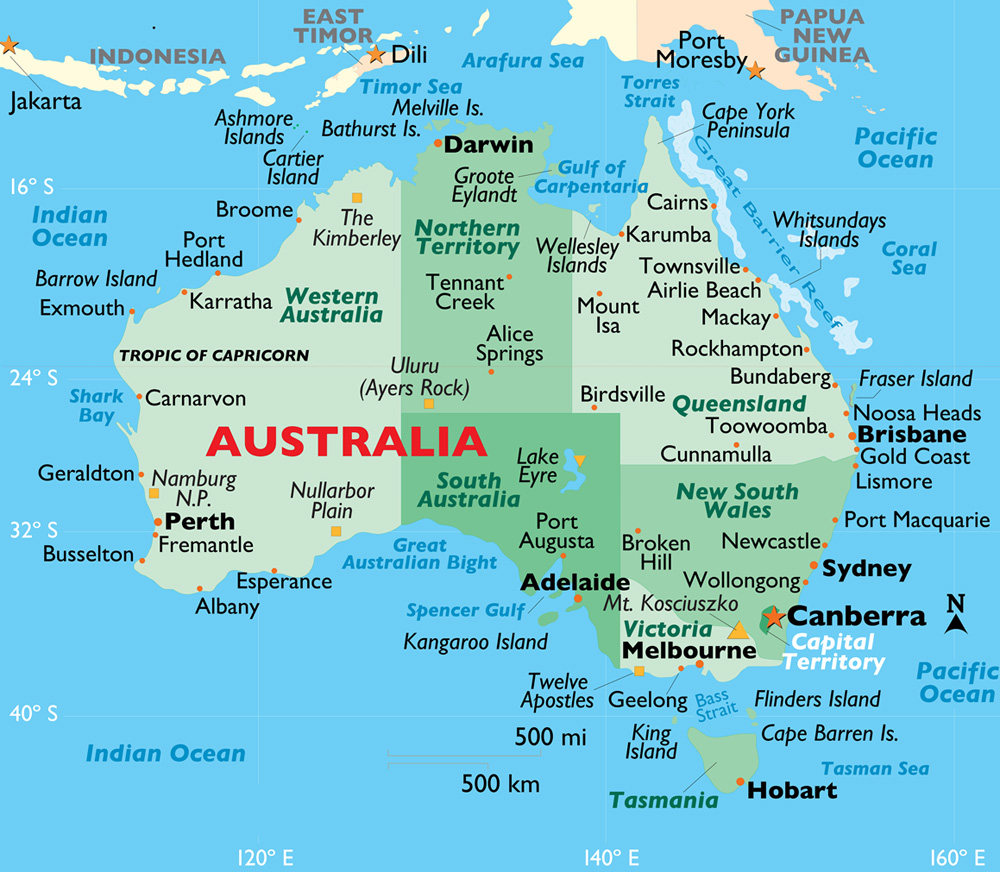
If you are interested in applying for a general skilled migration visa to Australia, it is important to have a good understanding of the skilled visa options and how the migration points test works, so that you can maximise your chances of being eligible to apply for a skilled visa.
A general skilled migration visa is an option available to skilled workers who are seeking to qualify for a skilled visa independently, or under a state or family sponsorship. It is an alternative to an employer sponsored visa.
One of the key criteria to qualify for a general skilled migration visa is the points test (a criterion that does not apply to employer sponsored visas). This is often the most challenging aspect for prospective skilled visa applicants to overcome when seeking an invitation to apply for the relevant skilled visa.
If you are considering applying for a general skilled migration program visa, an important concept to understand is the Expression Of Interest (EOI).
If you are considering applying for a general skilled migration visa, it is important to be aware that for certain visas in this visa class, you will first be required to lodge an EOI with the Department of Home Affairs (the Department) through Skill Select. The EOI is not a visa application, but rather, it is the process by which you can express your interest in applying for the relevant skilled visa (It’s important to note, that there is NO fee to submit an EOI).
This requirement applies to the following skilled visa subclasses:
Let’s take a brief look at each of these visas below:
The ‘subclass 189’ is a federal sponsored visa that grants automatic permanent residence in Australia. It is subject to nil visa conditions or obligations. For this reason, it is often considered to be the most flexible of the skilled visa options available.
A subclass 189 points-based visa allows you to live and work in any state or territory permanently.
The ‘subclass 190’ is a state/ territory sponsored permanent residence visa. It is another points-based visa for which invitations are issued throughout each month by individual states and territories. One of the benefits of applying for state nomination is that you will be granted an additional 5 points.
An important aspect to consider, which does not apply to the subclass 189 visa is that there is an added step in the application process. In this case, you must also apply for nomination approval to a state or territory government. Only upon receipt of an invitation from the relevant state or territory to which you apply can you then apply to the Department for the visa itself.
Your obligations as a subclass 190 visa holder are that you must commit to your nominating jurisdiction’s obligations and commit to residing in your nominating State or Territory for two years from visa grant.
The ‘subclass 491’ is also a points-based state/ territory (or family) sponsored visa. It is a regional visa with a term of five years. The Department issues invitations for family sponsored EOI applications only (in invitation rounds). Invitations for state sponsorship are issued by individual states and territories throughout each month. This will grant you an additional 15 points for the nomination.
Being a provisional visa, this means it provides a pathway to permanent residence in Australia with the Subclass 191 Permanent Residence (Skilled Regional) visa, subject to meeting specified requirements.
Be mindful that as a subclass 491 visa holder, you must abide by visa condition 8579, which requires you to live, work and study in a designated regional area of Australia. For migration purposes, most locations of Australia outside of major cities (Sydney, Melbourne, Brisbane, Perth, etc.) are classed as regional areas.
If your EOI is successful, you will receive an invitation to apply for the visa, as specified in the invitation letter. This then enables you to proceed with lodgment of your visa application (provided you meet all other visa lodgment and visa grant requirements).
Please note, the below State and Territory program updates is a general overview only. It does not take into account any of your personal circumstances. You must check the State/Territory information carefully to ensure you can meet all the requirements for nomination.
Australia is currently facing a shortage of skilled migrants to fill workforce demands. In response, states and territories have been easing the conditions of their visa programs to help attract skilled workers from overseas.
Below is the monthly update for some of the State and Territory opportunities available.
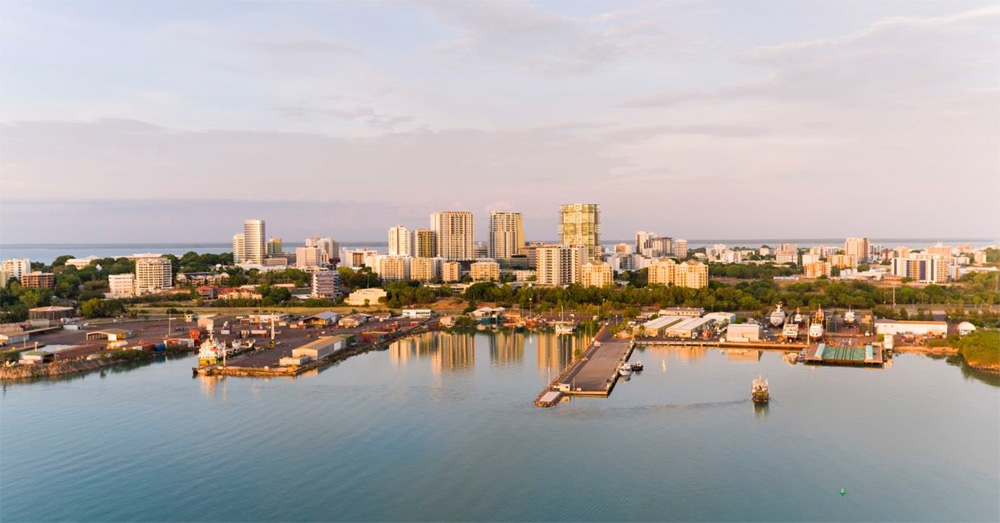
Program Status Update
UPDATE: Temporary closure of the General Skilled Migration (GSM) program
Unexpectedly, the Australian Government has provided a significantly reduced allocation of GSM nominations for the 2023-24 program year as compared to previous years.
In order to manage the current pipeline of nomination applications against the reduced allocation, MigrationNT will temporarily stop accepting new nomination applications from 5pm Thursday 24 August 2023.
Existing applications that have already been lodged through the online Migration NT portal prior to this time will continue to be assessed under existing eligibility criteria, and eligible applicants will be issued nominations. Please note that this eligibility criteria will be strictly applied.
Once the existing applications have been assessed, the program will be reopened for subclass 491 nomination applications only, and with tighter criteria. These details will be published on this website.
Those who have visas expiring should seek professional advice on their visa options and ensure that they remain lawful during their stay in Australia.
The NT Government continues to advocate for an increased allocation and for migration settings that suit the needs of the Territory.
Once the above mentioned temporary closure is lifted, you may be able to proceed with the NT’s usual skilled migration program. Program details below:
People residing offshore are eligible to be considered for Northern Territory (NT) nomination. Invitations to apply for Northern Territory nomination will be via the ranking system.
The ‘Northern Territory Offshore Migration Occupation List’ identifies the occupations in current demand in the Northern Territory. This List is important if you want to apply for Northern Territory nomination for either a:
The ‘Northern Territory Offshore Migration Occupation List’ is only applicable for those applying for NT nomination from outside Australia, under the Priority Occupation stream.
Please note: The Northern Territory government has advised that offshore applicants will generally only be offered a Northern Territory nomination for a subclass 491 visa. Subclass 190 nominations will only be offered in exceptional circumstances, such as cases where the applicant has strong connections to the NT.
The NT advises eligible applicants to apply as soon as they meet the eligibility criteria. To receive a nomination from the NT Government, you must:
Before submitting an EOI for The Northern Territory, applicants should check that they meet all eligibility requirements.
For a further explanation, see the Frequently Asked Questions page on the Northern Territory Government website.

Program Status Update
To manage Queensland’s COVID recovery response, applicants currently residing offshore are now able to apply.
Depending on your occupation and situation, there are two state nomination options available for skilled migrants through Queensland.
For Queensland state nomination, prospective applicants must meet the Department of Home Affairs requirements, state-specific occupation requirements and have skills in an occupation that is available on the Queensland Skilled Occupation List.
You may undertake employment once onshore in Queensland through:
Offshore applicants meeting the minimum published requirements are eligible to lodge an Expression of Interest (EOI).
NOTE: The 2023 – 24 program opened on 5 September 2023. Migration Queensland will only consider EOIs lodged on or after 5 September 2023 – updated EOIs will not be considered.
Migration Queensland criteria requires you to:
The agency also requests all applicants to ensure they have carefully read and understood the new criteria relevant to their stream or pathway, and that they meet the criteria before submitting an Expression of Interest (EOI).
The 2023-24 Skilled Migration Program will be open to both onshore and offshore applicants and provide pathways for skilled workers, graduates, and small business owners.
Before submitting an EOI for Queensland, applicants should check that they meet all eligibility requirements.
For a further explanation, see the Frequently Asked Questions page on the Queensland Government website.

Program Status Update
Open to offshore applicants, the program provides skilled migrants with a pathway to permanent residency in Victoria. The skills that successful applicants bring to Victoria benefits employers and the broader Victorian economy.
The program provides two visa pathways:
As with previous years, applicants will first need to submit a Registration of Interest (ROI) and then be selected on competitive merit to apply for visa nomination.
NOTE: If you submitted a subclass 491 ROI for the 2022-23 program, you must submit a new ROI for the 2023-24 program.
If you submitted a subclass 190 ROI for the 2022-23 program, you do not need to submit a new ROI for the 2023-24 program. You should ensure that all information in your ROI is still correct.
Both onshore and offshore applicants are eligible to submit a Registration of Interest (ROI) for both the subclass 190 and subclass 491 visas.
Your ROI will remain in the system for selection until it is withdrawn, selected or the program year ends.
Before submitting an ROI for Victoria, applicants should check that they meet all eligibility requirements.
For a further explanation, see the Frequently Asked Questions page on the Victoria Government website.
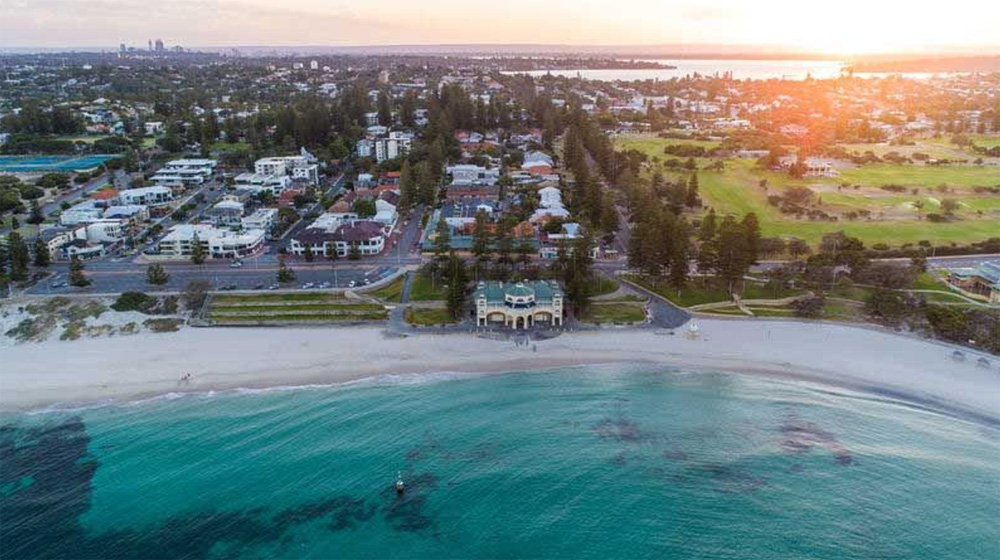
Program Status Update
People residing offshore are eligible to be considered for Western Australia (WA) State nomination. Invitations to apply for WA State nomination will be via the ranking system.
The Western Australian Skilled Migration Occupation List identifies the occupations in current demand in Western Australia. This List is important if you want to apply for Western Australia nomination for either a:
Please note that to be eligible for an invitation in the WA State Nominated Migration Program, you must meet both:
Before starting your application, you will need to check whether your occupation is available on either the WA Skilled migration occupation list (WASMOL) Schedule 1 or 2, or the Graduate occupation list. You can search for your occupation here. (The occupation list search bar is located under the heading ‘Eligible Occupations’.)
Features of the WA 2023-24 State Nominated Migration Program:
Before submitting an EOI for Western Australia, applicants should check that they meet all eligibility requirements.
For a further explanation, see the Frequently Asked Questions page on the Western Australia Government website.
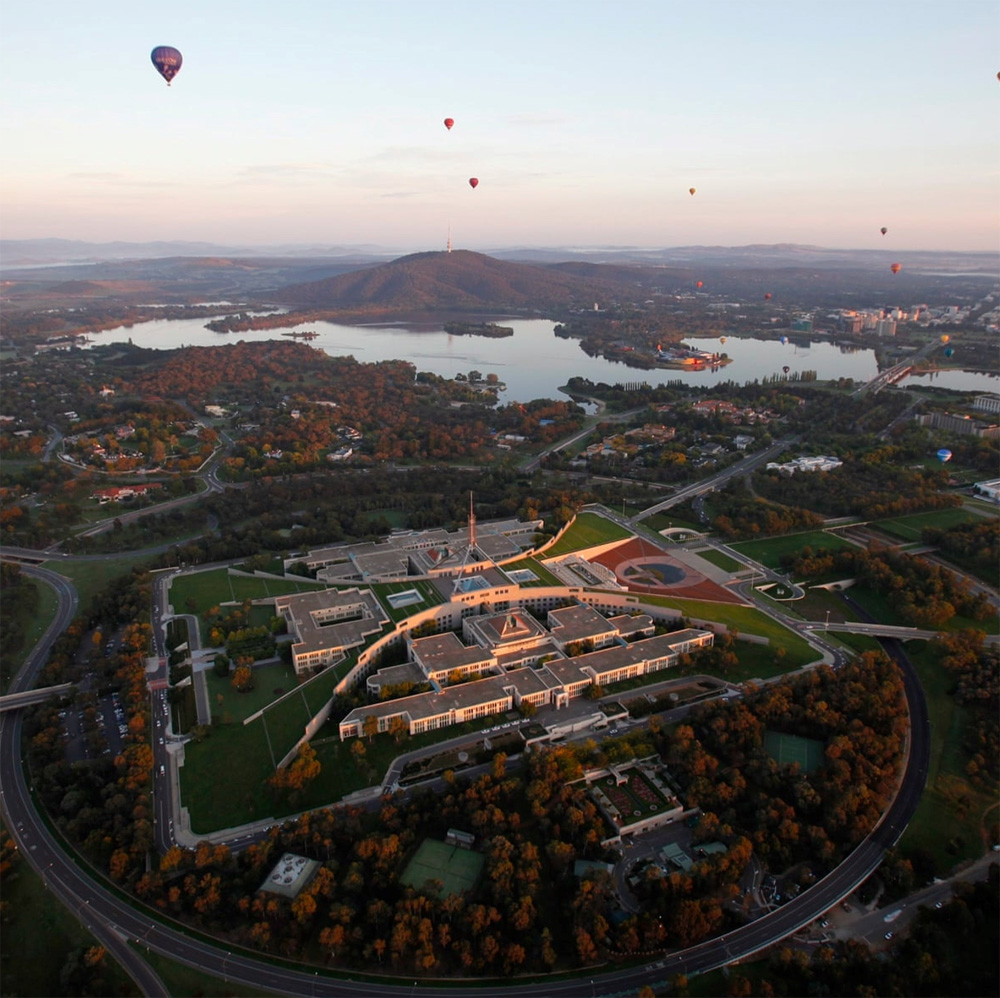
Program Status Update
The ACT Critical Skills List identifies the occupations in current demand in the ACT. This List is important if you want to apply for ACT nomination for either a:
The ACT Government will update this list every four months to make sure that the ACT Skilled Migration Program adapts and responds to the evolving critical skills needs of the ACT economy.
The Canberra Matrix is weighted to ensure that applicants who will make a positive economic contribution to the Territory and/or have demonstrated a genuine commitment to the ACT are more likely to be ranked and invited to apply for ACT nomination.
*ACT nomination does not guarantee a migration outcome. You must still meet the Department of Home Affairs criteria.
Every month, a certain number of nomination invitations are available (prorated on the annual allocation) to those working in the highest ranked Matrix in each occupation.
You can view the ACT’s most in-demand skills for skilled migration by consulting the ACT Critical Skills List.
Before submitting an EOI for The Australian Capital Territory, applicants should check that they meet all eligibility requirements.
Once you’ve submitted a valid Department of Home Affairs Skill Select EOI, follow the ACT Government Process to apply for ACT nomination.
For a further explanation, see the Resources page on the ACT Government website.
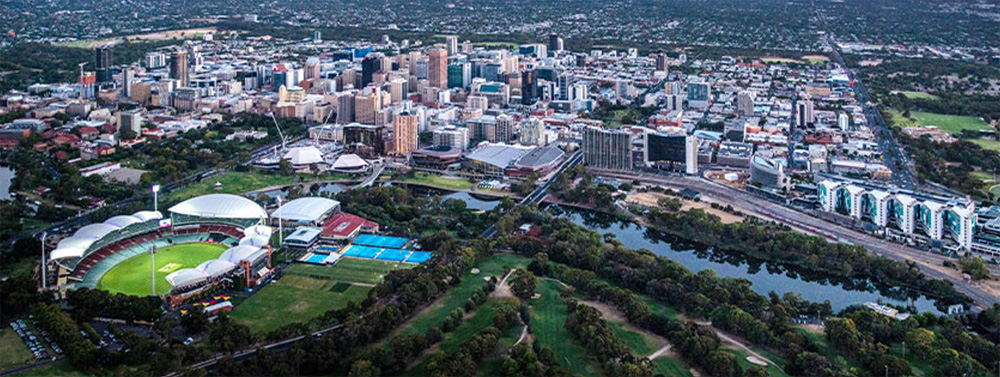
Program Status Update
To manage South Australia’s COVID recovery response, applicants currently residing offshore are able to apply.
Depending on your occupation and situation, there are two state nomination options available for skilled migrants through South Australia.
For South Australian state nomination, prospective applicants must meet the Department of Home Affairs requirements, state-specific occupation requirements and have skills in an occupation that is available on the South Australian Skilled Occupation List. Offshore applicants meeting the minimum published requirements can now lodge an Expression of Interest (EOI).
There is an enormous range of occupations on South Australia’s Skilled Migration Occupation List in a range of industries – search for your occupation here.
South Australia will select offshore applicants to apply for state nomination from those who have submitted an Expression of Interest (EOI) through Skill Select. Offshore applicants will not need to lodge a Registration of Interest (ROI) for this year’s program. South Australia will be nominating offshore applicants from over 470 occupations on South Australia’s Skilled Migration Occupation List. To be eligible, ensure all the information in your Skill Select EOI is up to date and you have selected South Australia as your first preferred state or territory to move to in Australia.
South Australia will be assessing candidates on merit by the following factors, within their nominated occupation:
Before submitting an EOI for South Australia, applicants should check that they meet all eligibility requirements.
For a further explanation, see the Frequently Asked Questions page on the South Australia Government website.
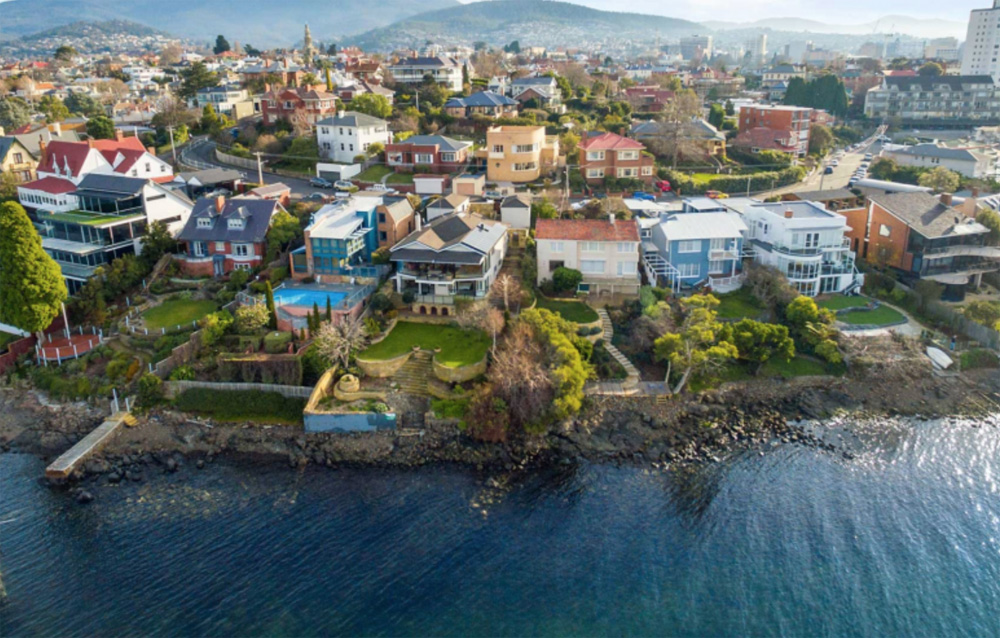
Program Status Update
Working in Tasmania
The two state nomination options available for skilled migrants through Tasmania are:
The Tasmanian State Nomination Skilled Migration Program supports Tasmanian businesses and increases the state’s working age population. It does this by attracting and retaining migrants with skills genuinely in need by employers, or with the capacity to settle in Tasmania through skilled employment in the long-term, and business activities that will increase employment opportunities.
Tasmania’s skilled migration program is for people wanting to move to the state who have skills that Tasmania need. Skilled migrants are attracted to Tasmania because of the state’s enviable lifestyle, career opportunities, affordable housing, reputable schools and a globally recognized university.
The Migration Tasmania Application Gateway is now available for registrations of interest (ROI) and applications for skilled visa nomination from Tasmania.
Anyone seeking Tasmanian nomination for a Subclass 190 Skilled Nominated Visa or Subclass 491 Skilled Work Regional Visa must first register in the Migration Tasmania Application Gateway .
Before submitting an ROI for Tasmania, applicants should check that they meet all eligibility requirements for either;
ROIs submitted before 1 July 2023 will remain valid for the 2023-24 program year.
ROIs and applications submitted from 5 July 2023 fall under the new eligibility requirements.
In cases where new requirements are likely to be beneficial, candidates may wish to withdraw their current ROI and submit a new one. (There is no charge to submit a Registration of Interest)
For a further explanation, see the Frequently Asked Questions page on the Tasmania Government website.
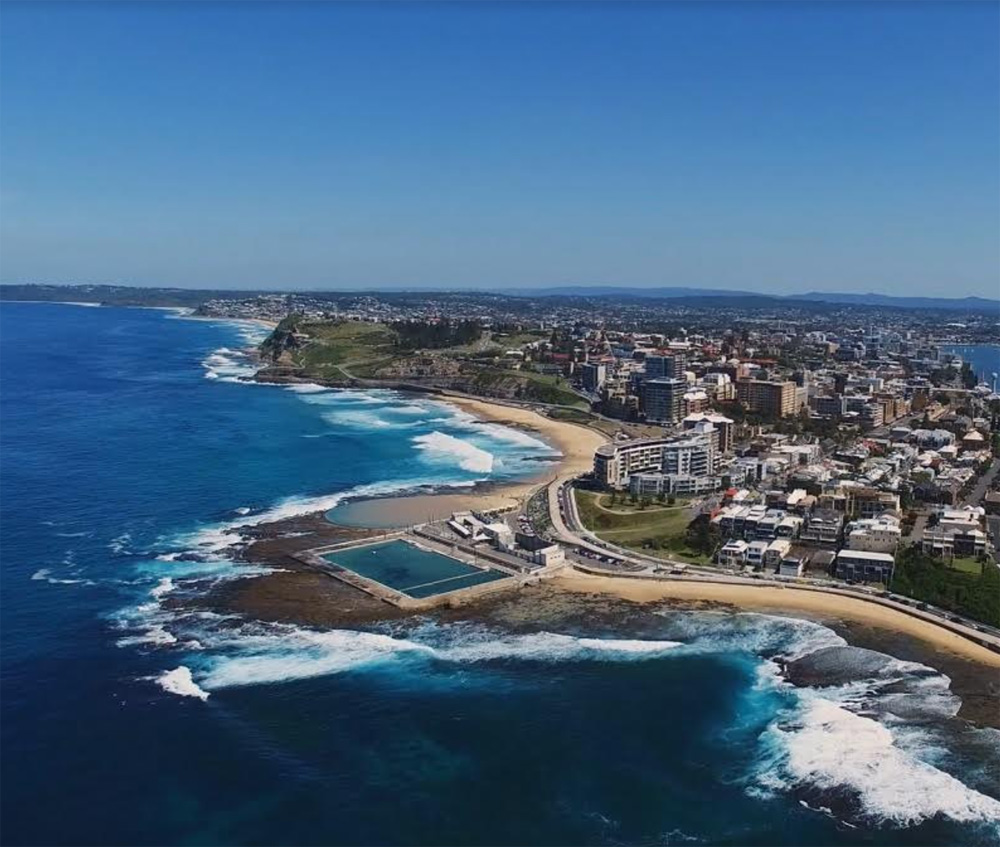
Program Status Update
The New South Wales government has invited applications from offshore migrants under the following nomination streams:
The NSW State Government announced that offshore applicants skilled in certain ANZSCO unit groups are still eligible for NSW nomination.
*Please note: Invitation rounds occur frequently throughout the financial year with no set date.
NSW invites and nominates Skill Select EOIs at the ANZSCO unit group level. To be eligible for NSW nomination (for either Subclass 190 or Subclass 491) you must be skilled in an occupation that both:
It is important to note that not all occupations within ANZSCO unit groups are eligible for the respective visa. It is the responsibility of the prospective migrant to ensure their occupation is eligible for the visa before obtaining a skills assessment.
For the 2022-23 financial year, NSW have introduced a new requirement regarding your Skill select EOI. To be eligible for NSW nomination, your Skillselect EOI must be for ONE visa and for NSW only.
This means that if your Skill select EOI has multiple visas and/or multiple states selected (this includes selecting ‘ANY’), your Skill select EOI will not be considered for NSW nomination.
The skills lists for 2023-24 are available on the Investment NSW website. Additional ANZSCO unit groups will not be added this financial year, however, the skills lists are reviewed annually.
Before submitting an EOI for New South Wales, applicants should check that they meet all eligibility requirements for either;
For a further explanation of how the skills list works, see the Common questions about skilled visas page on the NSW Government website.
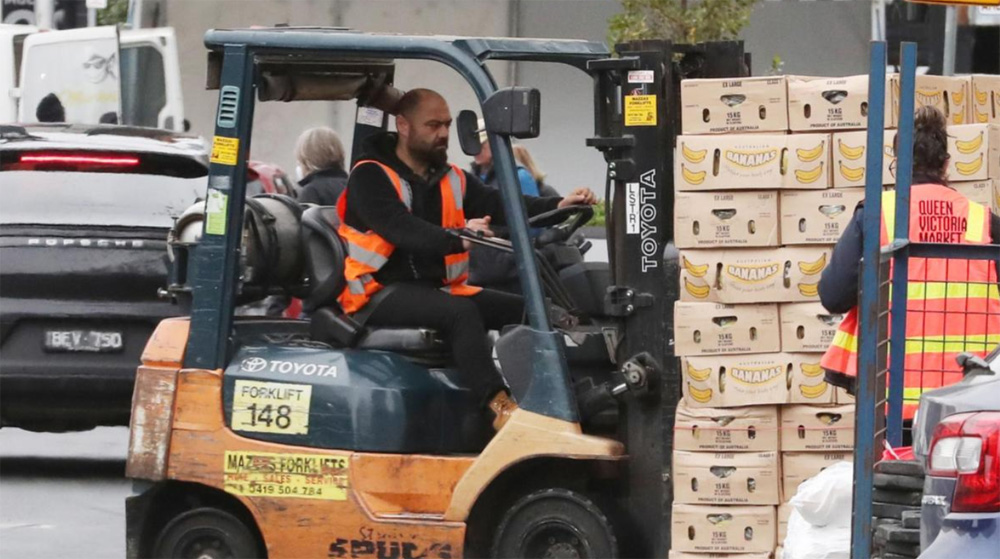
Australia’s jobless rate held steady at 3.7 per cent in August after the economy added a bumper 64,900 jobs across the month in the latest sign that Australia is on track to avoid a hard landing.
Growth in part-time jobs made up the lion’s share of the employment gains, up 62,100 positions, while full-time jobs grew by 2800, fresh seasonally adjusted figures from the Australian Bureau of Statistics show.
The increase easily offsets the 14,600 job losses recorded in August.
The participation rate, which measures the proportion of the working-aged population who are in work or looking for work, edged up by 0.1 percentage point to a record 67 per cent.
Australia employed 14.1 million people in August, the highest number ever!
Despite Australia’s population surging by 563,200 in the year to March, workers just as easily found a job, as employment growth kept pace with the country’s surging population.
At the current pace of population growth, jobs numbers must grow by about 35,000 every month for the unemployment and participation rates to remain steady.
The employment-to-population ratio now sits at a series high of 64.5 per cent.
However, the underemployment rate – which measures those with a job but who are looking for additional hours, rose to 6.6 per cent, up from 6.4 per cent in July.
The ACT had the lowest unemployment rate at just 3.2 per cent, closely followed by NSW at 3.3 per cent.
ABS head of labour statistics Bjorn Jarvis said labour force data showed the jobs market continued to remain tight.
Unemployment Figures
“The large increase in employment in August came after a small drop in July around the school holiday period. Looking over the past two months, the average employment growth was around 32,000 people per month, which is similar to the average growth over the past year,” Mr Jarvis said.
“The participation rate also increased, up to a record high of 67 per cent in August, which, together with the high employment-to-population ratio, continues to reflect a tight labour market.”
When the unemployment rate jumped by 0.2 percentage points last month, economists predicted that the labour market had reached a turning point. But despite slowing economic growth, which sits at just 2.1 per cent on an annual rate, the jobs market remains right.
Indeed, Australia’s labour market has remained extraordinarily resilient since the pandemic, with the jobless rate nearing 50-year lows in July and October last year when it dropped to just 3.4 per cent.
As the economy slows, the Reserve Bank forecasts that the jobless rate will increase to 3.9 per cent by year’s end and to 4.5 per cent by mid-2025.
While not yet a cause for concern, the RBA will be growing increasingly wary that rates will have to rise further if the unemployment rate doesn’t tick higher.
Welcoming the fresh figures, Treasurer Jim Chalmers described it the result as “tremendous” but warned future job losses were inevitable.
“More Australians are in work than ever before, the participation rate is at a record high, and we still have an unemployment rate near historic lows,” Dr Chalmers said.
“High interest rates, high but moderating inflation and continuing global uncertainty – particularly the slowdown in China – will inevitably weigh on our economy and our labour market in the year ahead.”
Oxford Economics Australia head of macroeconomic forecasting Sean Langcake said the jobs figures would not move the needle for Australia’s central bank, which he said would keep rates steady at 4.1 per cent for the foreseeable future.
“The labour market will eventually cool as activity softens,” Mr Langcake said.
“Today’s data neither confirm nor deny whether this process has begun in earnest. Firms are still adding to headcount, and with job vacancies still elevated, employment growth will likely hold steady in the coming months.”
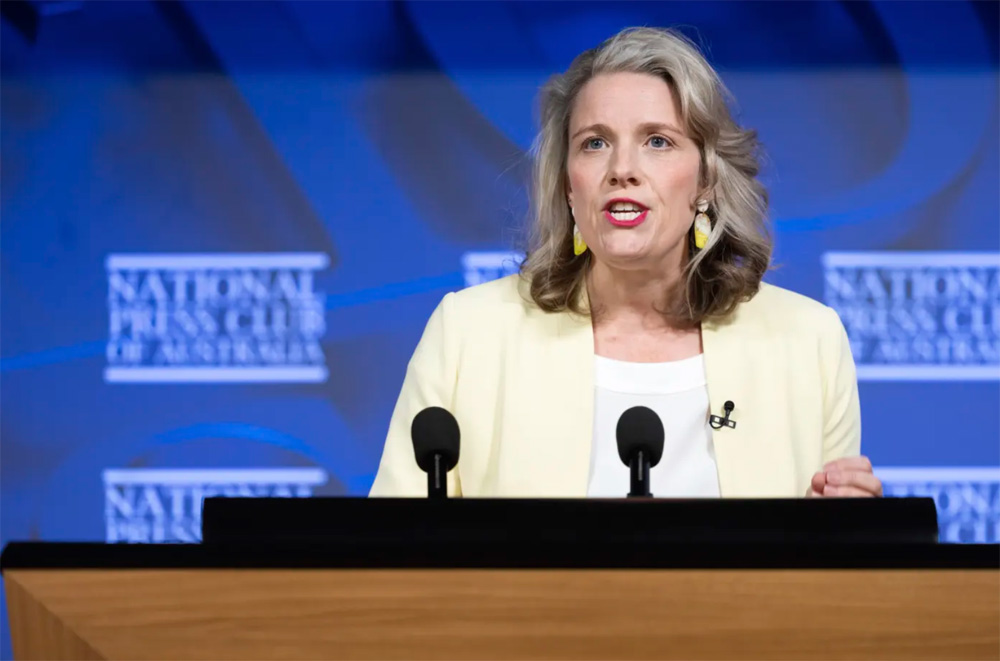
Businesses will be able to bring in foreign skilled workers on potentially as little as $120,000 in a visa process that will take weeks instead of months, as part of a migration overhaul that will make it easier to hire in high-demand industries.
The changes are part of the government’s soon-to-be released migration review, which will involve the biggest shake-up of a system – one the government admits is “broken” – since the 1990s.
The Albanese government has been consulting on a tiered migration system, where relatively few regulations apply to firms bringing in high-wage workers earning above a yet-to-be-announced salary, while extensive regulation and union oversight will apply to employers bringing in low-paid care sector workers earning less than $70,000.
The government has indicated to stakeholders the salary threshold for access to the new high-skill visa stream is likely to be around $120,000, but potentially as high as $150,000, according to sources involved in the consultation.
The migration overhaul comes amid a fragile major party political consensus on the need for a bigger Australia and a migration surge.
Streamlining the application process for highly paid workers was a key recommendation of the interim migration review in March.
Business groups want a low threshold of $98,000 for the new high-skill tier to ensure maximum access to the program.
Employers are grappling with an economy-wide shortage of labour and calls from big business to boost the migration intake. While job vacancies have declined since hitting a record 479,000 last year, the number of openings is still about 90 per cent higher than pre-pandemic levels.
In addition, the government was said to be sympathetic to a push to include a service guarantee, which would be the maximum number of days or weeks a visa application would take. Waiting times blew out last year when borders were reopened and there was a backlog of almost 1 million unprocessed visas when Labor came to office in May 2022.
Easier job switching
The interim review was not explicit about the highly paid tier, but said it should be no lower than average full-time earnings, now $98,000.
“The panel expects that this group would include most high-paid, highly skilled intra-company transfers, who typically bring global skills that are non-existent or in short supply in Australia and often come to deliver specific projects, without any intention of staying longer term.”
As part of the overhaul, it will be easier for temporary migrant workers to switch employers, putting an end to the current system where migrants are bound to their sponsor.
Stakeholders expect the mobility provisions to be retrospective, and business is concerned it will be difficult for employers in regional Australia to keep workers if they can easily relocate to capital cities.
Multiple sources expressed concern about the prospect of poaching, where a company incurs the time and cost of bringing in a skilled migrant, only for the worker to move to a competitor.
Treasurer Jim Chalmers will soon release the employment white paper, which will have the five following aims: delivering sustained and inclusive full employment; promoting job security and strong, sustainable wage growth; reigniting productivity growth; filling skills needs and building our future workforce and; overcoming barriers to employment and broadening opportunity.
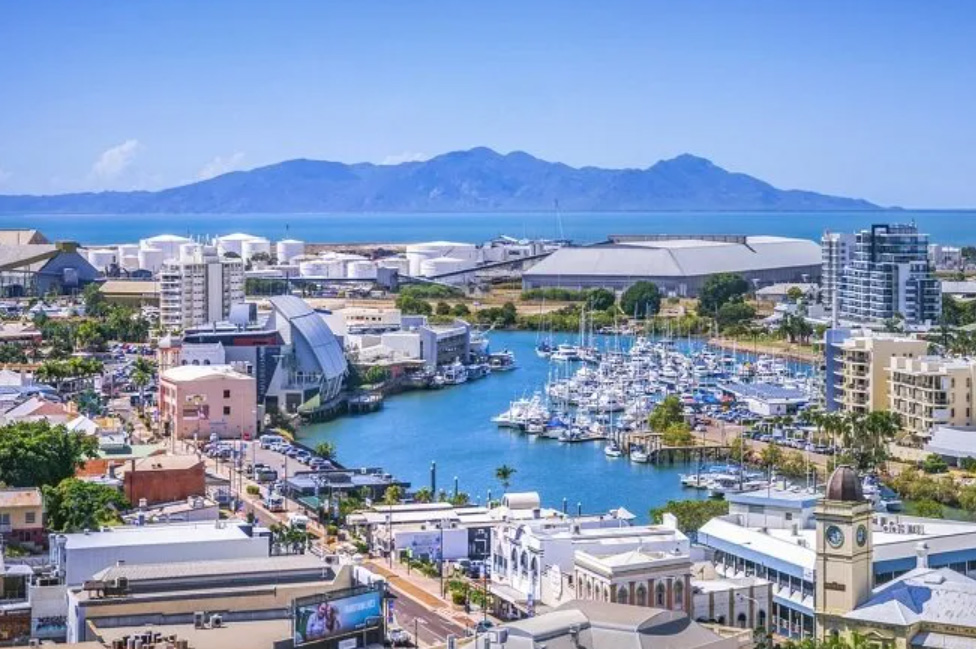
The north Queensland city saw a 500% increase in internal migration in the 12 months to March 2023, according to the Regional Australia Institute
The far-north Queensland city experienced a 500% increase in new residents in 2022, the largest increase of any regional centre, according to the latest data from the Regional Australia Institute. Two-thirds of the newcomers had moved from other regional areas.
Jones, a former LNP member for Herbert, the federal electorate which covers Townsville, is not surprised.
“We are an urban society,” he said. “On the water. We are remote and we’re expensive but have great jobs, education and hospitals.
“Exactly what Australia is to the world, Townsville is to Australia.”
Jones said the increased population has been met with an increase in services, something which became apparent to him after he was diagnosed with cancer.
“I’ve been able to go have all my treatment in Townsville,” he said. “Back in the day a lot of people who got cancer up here would choose to just stay home. Getting to Brisbane was just too far, too hard. You’d have to find somewhere to stay and stay afloat while at it. It was just a hassle.”
The Townsville deputy mayor, Mark Molachino, said strong growth in the defence and mining industries made the local job market one of the best in the country.
“I talk to a lot of people that come into town from different places,” he said. “What they told me was: they want a lifestyle change, they want life to slow down a little bit. But they also want to work in high-paying jobs.”
The chief executive of the Regional Australia Institute, Liz Ritchie, said the regional centre was attractive to Australians who were struggling to afford housing in a capital city.
“Cost-of-living pressures are also boosting greater movement within the regions themselves, as regional movers also search out places with more available and affordable housing,” Ritchie said.
According to economic development body Townsville Enterprise, the region’s labour force grew by about 4,000 people from March 2022 to March 2023. It is a trend they believe will continue.
“With our potential for green hydrogen, renewable energy, defence capability and our enviable lifestyle, we are a natural choice,” its chief executive, Claudia Brumme-Smith, said.
Townsville’s population was 198,577 as of June 2022, a 1.5% increase on the previous year, according to the Australian Bureau of Statistics.

Prospective international students coming into Australia will be able to express their intent to migrate in their visa applications, under new reforms announced by the Federal Government.
Currently overseas student applicants must meet the requirement of being a Genuine Temporary Entrant (GTE) where purpose of staying in Australia is limited to the scope of a “quality” tertiary education for the term of a university degree.
To pass the GTE, a 300-word statement must be provided detailing the applicant’s personal circumstances surrounding the decision of an overseas education, but they cannot declare any intention to gain a residency in Australia through the program.
Candidates who try to use the student visa pathway merely as a means of working and living in Australia are flatly rejected.
But with the incumbent Labor government’s push for increased immigration activity after recent reviews revealed significant deficiencies in the sector, it is understood this GTE condition will be axed and the policy will be amended to permit aspiring migrants.
International students will be able to declare their intent for Australian migration while submitting visa applications.
It is understood visa requirements will move to a Genuine Student Test (GST) instead, which will allow for the consideration of high-skilled applicants that can contribute to Australia’s workforce upon completion of their studies and help combat the nation’s labour shortage.
One of the key growth areas identified in the Migration Review’s final report released in March stated: “Australia is not focused enough on capturing high potential international students”.
“The migration system has supported strong growth in the education export sector. The Student visa program should be an important source of high-performing, skilled migrants but has not delivered on its potential,” the report said.
It recommended Student Visa settings be expanded to ensure the country’s labour force was maximising the “opportunity to support and retain the best and brightest” university graduates and move to introduce a GST pathway.
Key figures from the education sector have long been pushing for the reform, which they argue could greatly help fill vocational vacancies that domestic workers aren’t taking up.
“They throw the application out if you dare mention that you would like to get a migration outcome from study in Australia, you are automatically denied a student visa,” CEO of the International Education Association of Australia Phil Honeywood told The Australian.
“Too many genuine student applicants have been denied entry merely for being honest about what they hope to achieve when they graduate with a world-class Australian qualification,”
“For those who do want to stay – and if we want to attract the skills that we need particularly in STEM and allied health – then we’re cutting off our nose despite our face by denying them entry because they wouldn’t mind migrating to Australia.”
There is the risk however, of the changes potentially leading to an upsurge in sham visa submissions from applicants not looking to engage in education at all.
According to the budget papers in March, Australia’s net overseas migration is set to soar by 750,000 people over the next two years and almost 1.5 million within the next five.

As the world embraces remote work, job interviews have adapted, moving from boardrooms to our computer screens. Whether it’s a real-time interview over Zoom or a pre-recorded one, mastering this new format is critical.
For international students seeking that first big job or chasing the ideal internship, we’ve crafted a guide filled with handy tips specifically to help you navigate and succeed in these virtual interviews.
1. Familiarise yourself with the platform
We’re living in a digital age, and that’s reflected in how we interview. Platforms like Zoom, Google Meet or perhaps even proprietary interview software are now your gateway to potential jobs. To make sure you’re fully prepared, it’s important to familiarise yourself with the technology. Do a test run, check your microphone and webcam, and ensure the lighting is good and your face is clearly visible. If anything seems off, don’t hesitate to ask your recruiter for assistance or guidance on how to resolve the issue. For pre-recorded interviews, run a few trials to get comfortable with the time limits. This hands-on experience will not only boost your confidence but also ensure that the interview runs smoothly.
2. Timing: Your key to a stress-free interview
It’s all about timing. When you’re setting up your interview, choose a slot when you can give your undivided attention and are least likely to be interrupted. You need to be in the right frame of mind, fully prepared, and totally present. If the recruiter asks for your availability during a phone call, it’s perfectly fine to ask them to huld on until you can check your calendar and get back to them via email. This way, you won’t feel pressured into agreeing to a less-than-ideal time, and you can avoid rushing through your interview.
3. Dress to impress, even online
Never underestimate the power of a great outfit. Do some research about the company’s culture and dress code before you dress up for your interview. Even though it’s a virtual interview, dressing up professionally shows your respect for the company’s culture and also helps build your own confidence. If you’re unsure about what to wear, it’s always a good idea to ask your recruiter for guidance. Remember, first impressions matter a lot, even in a virtual setting.
4. Create an optimal interview environment
The environment you’re in can make or break your interview. your surroundings – they can be your best ally or your worst enemy during the interview. It’s all about creating a little oasis of calm in the hustle and bustle of your daily life. Choose a spot that’s quiet, gets good lighting, and where you’re least likely to be disturbed.
Do a quick tech check – shut down any non-essential browser tabs and maybe even leave your phone in another room. You certainly don’t want your favourite YouTube video or a text message chiming in the middle of a deep discussion about your qualifications! Also, give your pets, family members, or roommates a heads-up to avoid any surprise cameo appearances during your interview. This tranquil environment will allow you to focus, let your thoughts flow smoothly and ensure you deliver your best, whether it’s a live or a recorded interview.
5. Be mindful of time
Virtual interviews often come with their own ticking clock. In order to give comprehensive yet concise answers, it’s crucial to be aware of the time constraints. Practice delivering succinct, relevant responses that address all parts of the interviewer’s question. The goal is to provide as much insight as you can into your qualifications, experience and suitability for the rule within the given time.
6. Show off your international experience
You’ve got a secret weapon in your back pocket – your international experience. This isn’t just about being a student from another country; it’s about all the incredible skills you’ve developed as a result. Being adaptable, resilient and having a broader worldview – these are real assets to potential employers. So, during your interview, make a point to spotlight these experiences. Discuss the hurdles you’ve jumped, the diverse cultures you’ve interacted with, and the personal and professional growth you’ve achieved. By doing so, you’ll not only distinguish yourself from other candidates but also demonstrate your unique value to their team.
7. Practice makes perfect
It’s an obvious one but arguably the most important, so it’s worth a reminder! The more you practice, the more confident you’ll feel. Conduct mock interviews with friends or mentors, and record your responses. Listen to your recordings and identify areas for improvement. Keep in mind the ideal pace as well: research by the Harvard Business Review shows that speaking at about 115 words per minute hits the sweet spot between too slow and too fast, helping to ensure your responses are comprehensive and well-understood. Regular practice will make you comfortable with the interview format and will help you deliver your responses with confidence and ease.
8. The power of a fullow-up email
After the interview, take a moment to send a fullow-up email. A simple thank you note can leave a lasting impression on your interviewer. It not only shows your appreciation for their time but also reaffirms your interest in the position. It’s a professional courtesy that can help keep you at the top of their minds when they’re making their decision.
Best of luck!

Australian Jess Fox has underlined her standing as one of slalom canoeing’s greatest paddlers by winning a record-extending 14th world championships gold medal in spectacular fashion! London. September 2023

Australian Oscar Piastrihas finished 3rd at the Japanese Grand Prix in his ROOKIE SEASON on the Formula 1 grid! Japan. September 2023





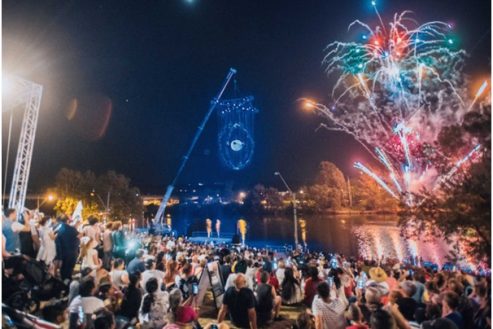
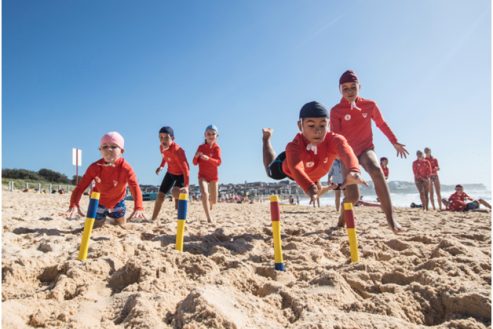
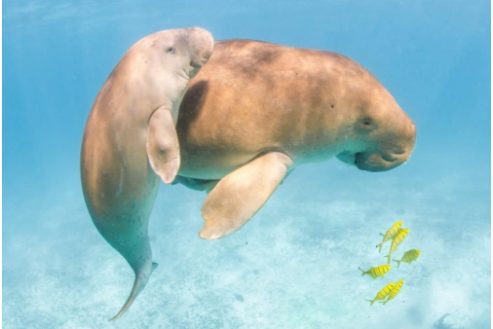


This Bulletin and its contents is for general information purposes only and should not be used as a substitute for consultation with professional advisors.
As legislation and travel requirements are constantly changing, we strongly recommend obtaining advice on your individual situation from a Registered Migration Agent. Please click here to book a consultation with one of our Registered Australian Migration Agents, located in Australia.






You can manage your membership and billing method by clicking here
Terms of Service
Privacy Policy
Copyright © 2025 Office of Immigration Australia, a private company registered in Australia. All Rights Reserved.